- Home
- Larry Niven
N-Space
N-Space Read online
“The paradigm SF personality of the last several decades.”
—Gregory Benford
“The premier hard SF writer of the day.”
—The Baltimore Sun
“His tales have grit, authenticity, colorful characters and pulse-pounding narrative drive. Niven is a true master!”
—Frederik Pohl
On a Los Angeles talk show, Arthur C. Clarke was once asked to name his favorite writer. His immediate answer: “Larry Niven.”
Author of such classics as Tales of Known Space, The Ringworld Engineers, and The Integral Trees; co-author of bestsellers like The Mote in God’s Eye, Lucifer’s Hammer, and Dream Park; Nebula winner and five-time recipient of SF’s Hugo award, Larry Niven is known to millions as the premier modern author of rigorous, scientifically consistent “hard” SF, the champion of “SF without a net.”
Now Larry Niven has assembled a retrospective collection from all phases of his remarkable career. Included are classic hard-SF tales like “Inconstant Moon,” relentless extrapolations like “All the Myriad Ways,” and hitherto-uncollected works like the novella “The Kiteman.” Here also are Niven’s own essays on SF, writing, and the way of the world, like “Building the Mote in God’s Eye” and “Down in Flames,” previously unpublished in book form. And throughout the book run Niven’s own remarks, comments, and afterthoughts to each piece presented—a wealth of anecdotes and observations from nearly three decades in the wonderful world of science fiction.
Rich with gossip, storytelling vigor, and sheer science-fictional fun, this is a book for SF lovers on the order of Robert A. Heinlein’s collection-cum-memoir Expanded Universe, or the autobiographies of Isaac Asimov—a compelling distillation of SF’s sense of wonder in its purest form.
Larry Niven lives in Tarzana, California.
This is a work of fiction. All the characters and events portrayed in this book are fictitious, and any resemblance to real people or events is purely coincidental.
N-SPACE
Copyright © 1990 by Larry Niven
All rights reserved, including the right to reproduce this book, or portions thereof, in any form.
Verses from “We Can’t Find,” copyright © 1987 by Jane A. Robinson, were used with the author’s permission. All rights reserved.
A Tor Book
Published by Tom Doherty Associates, Inc.
49 West 24th Street
New York, N.Y. 10010
Library of Congress Cataloging-in-Publication Data
Niven, Larry.
N-space / Larry Niven.
p. cm.
ISBN 0-312-85089-1
I. Title.
PS3564.I9N18 1990
813'.54—dc20
90-38888
CIP
Printed in the United States of America
First edition: September 1990
0 9 8 7 6 5 4 3 2 1
Book design by Jaye Zimet.
C O N T E N T S
Introduction: The Maker of Worlds by Tom Clancy
On Niven (by David Brin, Gregory Benford, Wendy All, John Hertz, Steven Barnes, and Frederik Pohl)
Dramatis Personae
Foreword: Playgrounds for the Mind
From WORLD OF PTAVVS
Bordered in Black
Convergent Series
All the Myriad Ways
From A GIFT FROM EARTH
For a Foggy Night
The Meddler
Passerby
Down in Flames
From RINGWORLD
The Fourth Profession
“Shall We Indulge in Rishathra?” (with cartoons by William Rotsler)
Man of Steel, Woman of Kleenex
Inconstant Moon
What Can You Say about Chocolate Covered Manhole Covers?
Cloak of Anarchy
From PROTECTOR
The Hole Man
Night on Mispec Moor
Flare Time
The Locusts (with Steven Barnes)
From THE MOTE IN GOD’S EYE (with Jerry Pournelle)
Building The Mote in God’s Eye (with Jerry Pournelle)
Brenda
The Return of William Proxmire
The Tale of the Jinni and the Sisters
Madness Has Its Place
Niven’s Laws
The Kiteman
The Alien in Our Minds
Space
Bibliography of Larry Niven
N - S P A C E
INTRODUCTION
THE MAKER OF WORLDS
BY TOM CLANCY
Some years ago, when I was still dreaming about becoming that special breed of cat called “author,” I had a birthday coming up and my wife was out of ideas. I told her to check out the bookstores for any book by Larry Niven except the three I’d already acquired. I don’t remember how many Wanda returned with, but I do know that I still read them periodically.
One of the bad things about being a writer (and there are many) is that when writing a novel, you often find it impossible to read someone else’s novel. Some evil agency inside your brain takes note of the fact that you are reading instead of writing and forbids you to read more than thirty or forty pages. So, often you go back to vegetating in front of the TV because you can only write so much in a day, and the reason you picked up that book in the first place is to get your mind off what you were doing that morning. Writing is, therefore, both a form of compulsive behavior and, I frequently tell people, a self-induced form of mental illness. Those few writers who don’t start off by being a little nuts soon get that way as a direct result of their vocation.
When I find myself in desperate need of removing my mind from THE PLOT so that I can look at it just a little more objectively the next day, my helper and pshrink is Larry Niven. For some reason, my brain does not recognize him as a threat to my compulsion.
The scope of Larry’s work is so vast that only a writer of supreme talent could disguise the fact as well as he does. He doesn’t just set up a cute little story of ETs or interplanetary war. Not Larry—he builds a complete universe. Oh, sure, he keeps the galaxy pretty much as we know it (or think we know it), but he peoples it with whole sets of civilizations, some active, some extinct, all interrelated somehow or other. Now, that’s a pretty tall order, and if you’re not careful how you go about it, the reader would soon be overwhelmed by the background and have trouble catching on to the story itself. But not with Larry. With little more than an occasional oh, by the way he sets all the scenery in place and then gets on with his tale, which is always a story with an interesting point and a fairly tight focus embellished by the scenery instead of being dominated by it.
And this ain’t easy. Trust me, I write for a living, too.
All authors get fan mail, some good, and some not so good. There are two kinds that really matter. The stuff you get from kids is very special. Kids who read for recreation, and then have the audacity actually to write a letter to the author (I never did) are something that always touches you. These kids will go on to accomplish things, and it’s rather nice to think that you’ve influenced them a little bit. Next best is the mail you occasionally get from fellow writers. To be read by someone in the same line of work—and the worst thing about being a writer is that it really murders your reading—is rather like being a fighter pilot and having a beer handed to you by another fighter pilot. Your basic good feeling. I expect that Larry gets a lot of such letters. In the times when I need to escape from inside my head and relax, Larry’s the guy who relaxes me. As I suspect he does with a lot of others. Thanks, pal.
• • •
ON NIVEN
The first time I met Larry Niven I accused him, in a jocular way, of stealing some of my best ideas and publishing them before I had even had them. For instance, I rea
d PROTECTOR about a year after I’d had the idea about why immortality in an individual would never make sense. There happen to be powerful Darwinistic reasons for people to die and get out of the way and stop breeding. However, Larry had already taken this notion, explored it so thoroughly that, in effect, no one could ever explore that territory again without tipping his hat to Larry. This is actually a fairly rapacious thing to do. If you think that the territory of notions is limited, then the hard sf writer is like a wildcat miner drilling out resources that are shrinking. For whatever it’s worth, some people think that way. A lot of sf writers aren’t writing hard science fiction because they think most of it has been written. If their reasoning is true—and I don’t think it is—one of the reasons is that you have writers like Larry Niven out there mining out whole veins and leaving nothing left for the rest of us to explore.
In hard science fiction originality is especially prized. If you’re the first to explore a certain idea, a new technology—black holes, neutron stars—you get a fair amount of acclaim. But for Niven it’s not enough to be the first. He has to also be last. That is his attitude, and in a sense it is a very aggressive attitude.
So in the end we writers revere Larry Niven, even though he makes our jobs harder. He not only mines all these marvelous veins of ideas, he mines them to exhaustion.
—David Brin
I met Larry in the mid-1960s, when he was just starting as a writer. Like many of us he began shakily, unsure of many aspects of his craft, but absolutely firm in the realm of ideas. He knew what he thought and felt a solid assurance.
I saw in him then a facet I’ve witnessed since in many university students: a love for the scientific worldview, but an impatience with the humdrum daily grind of science itself as universities too often present the field. Larry always liked the big picture, the supple intersection of ideas. After Cal-Tech and his mathematics degree, he seemed to feel an urge for larger landscapes.
I suspect many sf writers encounter such a moment, which becomes the launching point for careers. Poul Anderson finished his degree in physics and then turned not to ornate calculations but to a typewriter. This desire to sing rather than walk the pedestrian pathways of science is all to the good: we need our bards. Indeed, perhaps we need them more than we need more careful but closed thinkers.
Many science fiction readers are similar sorts. Larry was a breath of Campbellian clarity in the New Wave murk, and he is the natural voice of a whole segment of the scientific-technical community, irreplaceable and golden. Long may he sing!
—Gregory Benford
The first time I read Larry Niven? It was in college just before a chemistry exam. I discovered these Larry Niven books and read straight through them instead of studying for the exam.
I eventually got to meet him, and I’ve known Larry ever since—about fifteen years now (longer if you count knowing him through his books). I think my favorite thing about Larry personally is that he always has time for people. If you show an interest in him or what he does, he’s always ready to listen to you—I mean listen intently. You never feel as if you have just a little bit of his attention. He puts his whole self into listening and talking.
There are a lot of science fiction writers who frighten fans. Fans are actually scared of them. Larry’s never been that way. Never.
—Wendy All
Larry is probably the most beloved pro in the science fiction fan world. Panels in which he is participating, parties at which he is likely to appear, are thronged. With good reason. He says wonderful things. He is truly congenial (which few science fiction pros are). People like to be around him.
—John Hertz
About 11 years ago I’d done a lot of writing but the only payment I’d received was something like ⅕ of a cent a word or payment in contributor’s copies. Still I considered myself a writer.
So one day I’m in the club house of the Los Angeles Science Fiction Society, and Larry Niven walks in. When Larry walks in, you understand, he is completely surrounded by the people there. It’s like he’s a god, and this is his domain.
I walked up to him and said: “Hello, Mr. Niven, my name’s Steven Barnes, and I’m a writer.”
He took a puff on his pipe, looked at me and said: “Okay, tell me a story.”
I just about died. But it so happened I’d sent out a story earlier that day about a compulsive gambler who pawns his pacemaker, and somehow I stumbled through it.
After that we started talking. He seemed kind of reserved, but even then I could see he was still in touch with his child-personality. I could especially see it in his eyes. In some ways it was as if the beard and pipe were props to convince you that, yes, these are the badges of adulthood. But back there were these little boy’s eyes.
I asked him if he’d read a story, and he said he would, and the next week I gave him an envelope containing three. I saw him the week following and asked if he had read them, and he said, yes, Jerry Pournelle and he had both read them. He said he was intrigued and asked me whether I’d be interested in looking at a story he’d tried writing ten years before and hadn’t been able to complete to his satisfaction.
Thank God the problems with the story had nothing to do with astrophysics or any of the technical things that Larry is a master of. They had to do with the way the human beings were relating to one another, and I was able to fix it.
We’ve been collaborating ever since.
The imperative for men in our culture is that they must go out and create—work, produce, change the land around them. Now people often think that it’s easy when you have a lot of money handed to you as a kid, as Larry had. All that does is say to you that the chances are very good you’ll never live up to the man who created all that wealth.
But Larry created a career separate from anything his family had handed him. He could have taken their money and lain by the side of the pool and vegetated or put it into land or condominiums and made a lot of money. And, indeed, he has made money off the money his father handed him. But the most important thing Larry did was to go out and define a whole new world. If his world in California had already been conquered, then Larry would create new worlds to conquer and people them with his own creations.
—from a conversation with Steven Barnes
Since I happened to be the lucky editor who published Larry Niven’s first story, I’ve been asked to tell a little bit about him, which I’m glad to do. Let me tell you about that first story…but forgive me if I start by explaining something about my own editorial practices.
When I was editing Galaxy and If in the 1960s I had made it a condition of employment that no one was to expect me to spend much time in the office of the publishing company. I was willing to appear now and then—one afternoon a week wasn’t objectionable—but that was as far as I would go. Between times I had an assistant to sit at a desk in the office for the purpose of answering the telephone and dealing with whatever routine things had to be dealt with. (For most of that time my assistant was a young woman named Judy-Lynn Benjamin, later Judy-Lynn del Rey, who went on to considerably better things later on—Del Rey Books is named after her.) One of Judy-Lynn’s jobs was to go through the week’s accumulations of unsolicited manuscripts by unknown writers (unflatteringly called “the slush pile”) for me. She wasn’t to read them—I have always read everything that was submitted to me myself, on the grounds that, as Frank Munsey once said, no magazine can survive the mistakes of more than one person—but Judy-Lynn took the stories out of the envelopes they arrived in, clipped rejection slips on them, put them in return envelopes with postage attached and stacked them up, unsealed, for me to pick up when I came in. Then, in the smoking car of the train back to the Jersey Shore each week, I read the fifty or a hundred stories that had turned up in that week’s slush. There would generally be a handful that required some sort of letter to the author, and, if I was very lucky, one or two that I could actually buy. All the rest I sealed up and dropped into the mailbox at the Red Ban
k train station, and that was the end of that. One doesn’t expect much out of the slush, you see. One is generally right about that, too.
So it was on just such a train ride, somewhere between Newark and Matawan, that I pulled out of its envelope a slim little manuscript called “The Coldest Place,” by some previously unknown person who said his name was Larry Niven.
That manuscript didn’t get mailed back. “The Coldest Place” wasn’t a great story. But it had a number of good things going for it. It started with a clever science-based idea—the “coldest place” of the title, paradoxically, was on the dark side of the very hottest planet in the solar system, Mercury—and the writing was competent enough, and besides the story was beautifully short. (I was always particularly looking for short stories, because—since we paid by the word—all those savvy professional writers had learned early that they ate better if they wrote long ones.)
So I kept that story out, and wrote a letter to the author saying I would be happy to buy it (for very little money, to be sure), and asked him a few questions about himself. And by return mail he answered that he’d take the offer and, yes, he had never sold a story before so I could call it a “first.” I put the check through, and marked it up for the printer, and all was well.
Or so I thought.
You never know, though, do you? There was a wholly unexpected development. Just at that time some busybody scientists, who should have found some more productive use for their time, were conducting radar studies of Mercury. They came up with the surprising (and just at that moment really unwelcome) information that the planet did not always present the same face to the Sun, as everyone (including Larry and I) had always thought. The damn thing revolved. It didn’t have a “coldest place.”
It was evident that Larry Niven read the same journals as I did, because a day or two later I got a worried letter from him to say that he’d just discovered his story had turned out to be scientifically wrong, and should he give the money back?

 The Integral Trees - Omnibus
The Integral Trees - Omnibus A World Out of Time
A World Out of Time Crashlander
Crashlander The World of Ptavvs
The World of Ptavvs Ringworld
Ringworld Juggler of Worlds
Juggler of Worlds The Ringworld Throne
The Ringworld Throne The Magic Goes Away Collection: The Magic Goes Away/The Magic May Return/More Magic
The Magic Goes Away Collection: The Magic Goes Away/The Magic May Return/More Magic A Gift From Earth
A Gift From Earth Escape From Hell
Escape From Hell Larry Niven’s Man-Kzin Wars - VII
Larry Niven’s Man-Kzin Wars - VII Rainbow Mars
Rainbow Mars Larry Niven’s Man-Kzin Wars - V
Larry Niven’s Man-Kzin Wars - V Larry Niven’s Man-Kzin Wars - I
Larry Niven’s Man-Kzin Wars - I Destroyer of Worlds
Destroyer of Worlds Man-Kzin Wars XIV
Man-Kzin Wars XIV Treasure Planet
Treasure Planet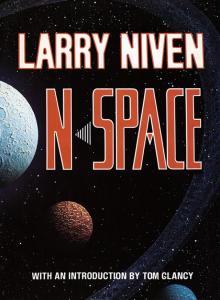 N-Space
N-Space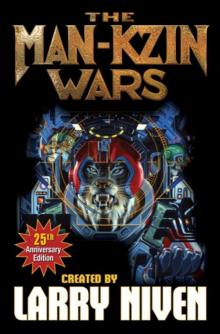 Man-Kzin Wars 25th Anniversary Edition
Man-Kzin Wars 25th Anniversary Edition The Ringworld Engineers
The Ringworld Engineers Larry Niven’s Man-Kzin Wars - XII
Larry Niven’s Man-Kzin Wars - XII The Magic May Return
The Magic May Return Tales of Known Space: The Universe of Larry Niven
Tales of Known Space: The Universe of Larry Niven The Magic Goes Away
The Magic Goes Away Larry Niven’s Man-Kzin Wars - III
Larry Niven’s Man-Kzin Wars - III Larry Niven’s Man-Kzin Wars - VI
Larry Niven’s Man-Kzin Wars - VI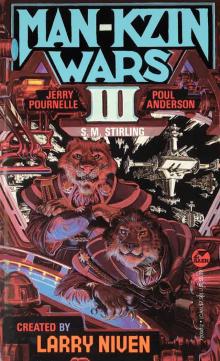 Man-Kzin Wars III
Man-Kzin Wars III Larry Niven’s Man-Kzin Wars - XI
Larry Niven’s Man-Kzin Wars - XI Inferno
Inferno 01-Human Space
01-Human Space Larry Niven’s Man-Kzin Wars - XIV
Larry Niven’s Man-Kzin Wars - XIV The Long Arm of Gil Hamilton
The Long Arm of Gil Hamilton Ringworld's Children
Ringworld's Children Man-Kzin Wars XII
Man-Kzin Wars XII Scatterbrain
Scatterbrain Man-Kzin Wars 9
Man-Kzin Wars 9 Man-Kzin Wars XIII
Man-Kzin Wars XIII Flatlander
Flatlander Man-Kzin Wars V
Man-Kzin Wars V Destiny's Forge
Destiny's Forge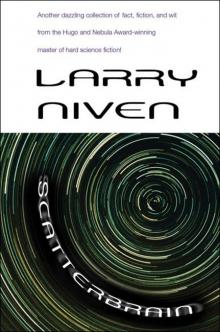 Scatterbrain (2003) SSC
Scatterbrain (2003) SSC The Time of the Warlock
The Time of the Warlock Choosing Names: Man-Kzin Wars VIII
Choosing Names: Man-Kzin Wars VIII Larry Niven's Man-Kzin Wars II
Larry Niven's Man-Kzin Wars II Man-Kzin Wars IX (Man-Kzin Wars Series Book 9)
Man-Kzin Wars IX (Man-Kzin Wars Series Book 9) Choosing Names: Man-Kzin Wars VIII (Man-Kzin Wars Series Book 8)
Choosing Names: Man-Kzin Wars VIII (Man-Kzin Wars Series Book 8) Treasure Planet - eARC
Treasure Planet - eARC The Draco Tavern
The Draco Tavern Larry Niven’s Man-Kzin Wars - The Houses of the Kzinti
Larry Niven’s Man-Kzin Wars - The Houses of the Kzinti The Fourth Profession
The Fourth Profession Betrayer of Worlds
Betrayer of Worlds Convergent Series
Convergent Series Starborn and Godsons
Starborn and Godsons Protector
Protector Larry Niven’s Man-Kzin Wars - IV
Larry Niven’s Man-Kzin Wars - IV Man-Kzin Wars IV (Man-Kzin Wars Series Book 4)
Man-Kzin Wars IV (Man-Kzin Wars Series Book 4) The Legacy of Heorot
The Legacy of Heorot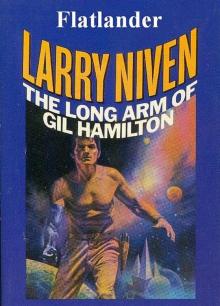 03-Flatlander
03-Flatlander Larry Niven’s Man-Kzin Wars - XIII
Larry Niven’s Man-Kzin Wars - XIII Destiny's Road
Destiny's Road Fate of Worlds
Fate of Worlds Beowulf's Children
Beowulf's Children 04-Protector
04-Protector The Flight of the Horse
The Flight of the Horse Man-Kzin Wars IV
Man-Kzin Wars IV The Moon Maze Game dp-4
The Moon Maze Game dp-4 The California Voodoo Game dp-3
The California Voodoo Game dp-3 07-Beowulf Shaeffer
07-Beowulf Shaeffer Ringworld's Children r-4
Ringworld's Children r-4 The Man-Kzin Wars 05
The Man-Kzin Wars 05 The Man-Kzin Wars 12
The Man-Kzin Wars 12 Lucifer's Hammer
Lucifer's Hammer The Seascape Tattoo
The Seascape Tattoo The Moon Maze Game
The Moon Maze Game Man-Kzin Wars IX
Man-Kzin Wars IX All The Myriad Ways
All The Myriad Ways More Magic
More Magic 02-World of Ptavvs
02-World of Ptavvs ARM
ARM The Ringworld Engineers (ringworld)
The Ringworld Engineers (ringworld) Burning Tower
Burning Tower The Man-Kzin Wars 06
The Man-Kzin Wars 06 The Man-Kzin Wars 03
The Man-Kzin Wars 03 Man-Kzin Wars XIII-ARC
Man-Kzin Wars XIII-ARC The Hole Man
The Hole Man The Warriors mw-1
The Warriors mw-1 The Houses of the Kzinti
The Houses of the Kzinti The Man-Kzin Wars 07
The Man-Kzin Wars 07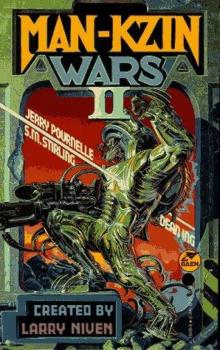 The Man-Kzin Wars 02
The Man-Kzin Wars 02 The Burning City
The Burning City At the Core
At the Core The Trellis
The Trellis The Man-Kzin Wars 01 mw-1
The Man-Kzin Wars 01 mw-1 The Man-Kzin Wars 04
The Man-Kzin Wars 04 The Man-Kzin Wars 08 - Choosing Names
The Man-Kzin Wars 08 - Choosing Names Dream Park
Dream Park How the Heroes Die
How the Heroes Die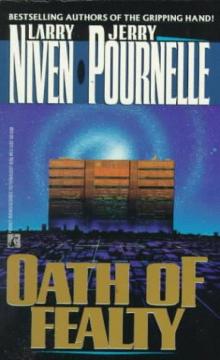 Oath of Fealty
Oath of Fealty The Smoke Ring t-2
The Smoke Ring t-2 06-Known Space
06-Known Space Destiny's Road h-3
Destiny's Road h-3 Flash crowd
Flash crowd The Man-Kzin Wars 11
The Man-Kzin Wars 11 The Best of Galaxy’s Edge 2013-2014
The Best of Galaxy’s Edge 2013-2014 The Ringworld Throne r-3
The Ringworld Throne r-3 A Kind of Murder
A Kind of Murder The Barsoom Project dp-2
The Barsoom Project dp-2 Building Harlequin’s Moon
Building Harlequin’s Moon The Gripping Hand
The Gripping Hand The Leagacy of Heorot
The Leagacy of Heorot Red Tide
Red Tide Choosing Names mw-8
Choosing Names mw-8 Inconstant Moon
Inconstant Moon The Man-Kzin Wars 10 - The Wunder War
The Man-Kzin Wars 10 - The Wunder War Fate of Worlds: Return From the Ringworld
Fate of Worlds: Return From the Ringworld Ringworld r-1
Ringworld r-1 05-A Gift From Earth
05-A Gift From Earth The Integral Trees t-1
The Integral Trees t-1 Footfall
Footfall The Mote In God's Eye
The Mote In God's Eye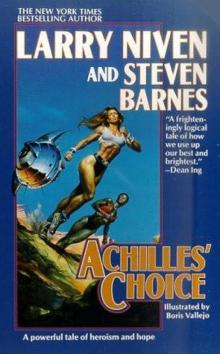 Achilles choice
Achilles choice The Man-Kzin Wars 01
The Man-Kzin Wars 01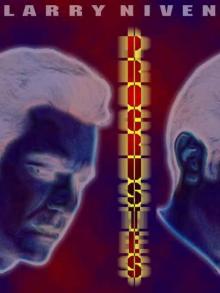 Procrustes
Procrustes The Man-Kzin Wars 03 mw-3
The Man-Kzin Wars 03 mw-3 The Goliath Stone
The Goliath Stone The Man-Kzin Wars 09
The Man-Kzin Wars 09